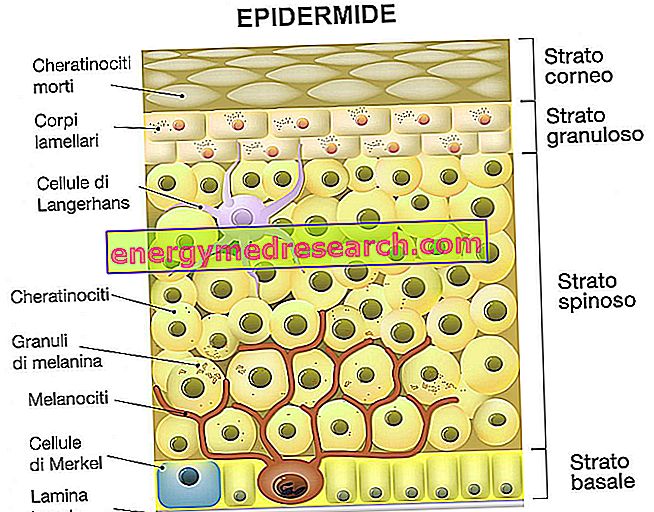
What is Cyanokit?
Cyanokit is a powder for solution for infusion (drip into a vein), containing the active ingredient hydroxocobalamin (vitamin B12a).
What is Cyanokit used for?
Cyanokit is indicated as an antidote in the treatment of cyanide poisoning (a very poisonous chemical substance) known or presumed. Cyanide poisoning is usually due to exposure to smoke from a fire, following inhalation or ingestion of cyanide, or contact with the skin or mucous membranes (for example, the mucous membrane of the oral cavity) with this substance. The medicine can only be obtained with a prescription.
How is Cyanokit used?
Cyanokit is given as an emergency treatment as soon as possible after poisoning. The medicine is given by intravenous infusion over 15 minutes. For adults, the initial dose is 5 g, while for children it is 70 mg per kilogram of body weight up to a maximum dose of 5 g. Depending on the severity of the poisoning and the patient's clinical response, a second dose may be given. The second dose is administered at an infusion rate of between 15 minutes and two hours, depending on the patient's condition. The maximum dose for adults is 10 g, that for children of 140 mg / kg up to a maximum of 10 g.
Cyanokit must be administered together with appropriate decontamination and patient support measures, including the administration of oxygen for breathing.
How does Cyanokit work?
The active ingredient in Cyanokit, hydroxocobalamin, reacts with the cyanide in the body.
This reaction leads to the formation of cyanocobalamin, a non-poisonous compound expelled from the body with urine. In this way the concentration of cyanide in the body is reduced, preventing the substance from fixing itself to an important enzyme present in the cells, called cytochrome oxidase, which supplies energy to the cells. The effects of cyanide poisoning are then attenuated. Hydroxocobalamin (vitamin B12a) has been used as a vitamin supplement since the 1950s.
How has Cyanokit been studied?
The effects of Cyanokit were first tested in experimental models before being studied in humans. No study has been performed to directly compare the efficacy of Cyanokit with any other treatment in humans. Information concerning the efficacy of the medicine was obtained from 83 patients who were hospitalized for suspected cyanide poisoning and who were given Cyanokit. In a study of 69 patients, cyanide poisoning was due to exposure to fire smoke. In this study, the conditions of the patients at the time of the accident were compared with those at the end of the Cyanokit infusion and over the next three days.
A further 14 patients whose cyanide poisoning was not due to smoke inhalation were examined, but - in most cases - cyanide intake for attempted suicide. Information concerning these patients was obtained from their medical records, recorded in the databases of two French hospitals.
What benefit has Cyanokit shown during the studies?
In the study concerning smoke inhalation, the response to Cyanokit was assessed as "positive" in 31 patients (45%), "partial" in 15 (22%) and "absent" in 10 (15%). The response in the remaining 13 patients was not disclosed. Fifty of the patients examined in this study survived. Survival was more likely if patients received Cyanokit before cardiac arrest, if they had less severe symptoms of brain damage and if they had lower concentrations of cyanide in the blood. Two patients survived despite being given Cyanokit after cardiac arrest. The symptoms of brain damage resolved in 38/66 patients. Of the 14 patients whose exposure to cyanide was not due to smoke inhalation, 10 survived, including 7 patients with "lethal" concentrations of cyanide in the blood. The four deceased patients had high concentrations of cyanide in the blood, and had had cardiac or respiratory arrest before the administration of Cyanokit.
What is the risk associated with Cyanokit?
Because hydroxocobalamin has an intense red color, most patients report a dark red coloration of the skin and mucous membranes up to 15 days and urine up to 35 days after Cyanokit administration. The frequency of this side effect of Cyanokit cannot be calculated based on the information currently available. For the full list of all side effects reported with Cyanokit, see the Package Leaflet.
The use of Cyanokit may interfere with the evaluation of burns and with the results of laboratory tests. A sticker is provided in each Cyanokit pack containing information on this. It is possible to attach the sticker to the patient's medical record so that the healthcare professional is informed of these effects of the medicine.
Why has Cyanokit been approved?
The Committee for Medicinal Products for Human Use (CHMP) concluded that, due to its effects on survival and prevention of brain damage, Cyanokit appears to be a well tolerated and effective cyanide antidote. No information is available on the success rates of other antidotes for cyanide poisoning; therefore it is not possible to compare the results obtained with Cyanokit with alternative drugs. However, the committee concluded that Cyanokit is beneficial compared to other antidotes as it has a good safety profile in patients who have not been poisoned. This makes it a useful option in cases where cyanide poisoning is only presumed. Therefore, the CHMP decided that Cyanokit's benefits are greater than its risks in the treatment of proven or presumed cyanide poisoning and recommended that it be given marketing authorization to Cyanokit.
More information on Cyanokit:
On 23 November 2007, the European Commission issued a marketing authorization for Cyanokit to Merck Santé sas, valid throughout the European Union.
The full EPANO for Cyanokit can be found here.
Last update of this summary: 10-2007.



